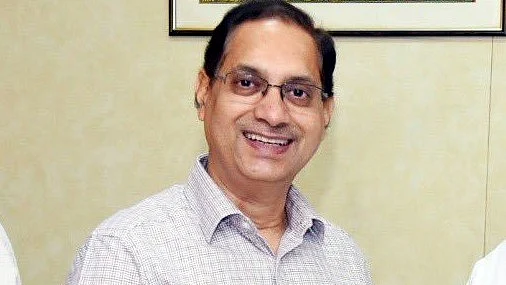Business
‘Sebi vs Scam’: Regulator flags over 1 lakh misleading posts amid cleanup push
SEBI’s challenge now is not just regulatory, but reputational as new SEBI Chair Tuhin Kanta Pandey tries to showcase assertiveness

After years of criticism for regulatory lapses and declining public trust, India’s capital market regulator, the Securities and Exchange Board of India (SEBI), is attempting to reclaim its credibility through an aggressive new campaign titled “Sebi versus Scam.” The move marks a decisive effort to counter widespread digital financial fraud and rebuild investor confidence that has been steadily eroded by past failures.
For over a decade, SEBI has faced intense scrutiny over delayed or inadequate responses to some of India’s biggest financial scandals, from the Satyam Computer Services accounting fraud and the IL&FS collapse to the Punjab National Bank scam.
Its perceived inability to curb insider trading, speculative manipulation in small- and mid-cap stocks, and the excesses of dubious market intermediaries has deepened scepticism among retail investors.
Adding to its troubles, allegations of conflict of interest involving SEBI Chairperson Madhabi Puri Buch in 2024, over offshore entities allegedly linked to the Adani Group, dented the regulator’s moral authority at a time when it was already under fire for perceived bias and inconsistency.
Now, under the stewardship of SEBI Chair Tuhin Kanta Pandey, the regulator appears to be taking a more assertive stance. The “Sebi versus Scam” initiative, part of a wider investor-protection push, seeks to clamp down on fraudulent digital activity — from fake trading apps and cloned websites to unregistered financial advisors promising unrealistic returns.
According to SEBI, over one lakh misleading posts and messages have already been flagged across social media platforms for removal. Pandey, speaking at CNBC-TV18’s Global Leadership Summit on Friday, 7 November, warned that unregulated financial influencers had become a “major risk” to market integrity, citing a recent SEBI survey that found 62 percent of investors rely on influencer recommendations when making investment decisions.
“In an environment where deceptive content spreads rapidly, investor protection must begin with investor education,” Pandey said.
Under the campaign, SEBI has intensified its social media surveillance and instructed exchanges to publish regularly updated whitelists of verified broker apps. It has also introduced digital verification tools such as Valid UPI and Sebi Check, designed to help investors authenticate the bank accounts and QR codes of registered intermediaries.
These measures, Pandey said, are essential “digital defences” in an era where financial scams are increasingly sophisticated and technologically driven.
Published: undefined
However, SEBI’s own nationwide investor survey reveals the scale of the challenge. While 22 per cent of financially aware non-investors said they plan to invest in the next year, large sections of the population remain disengaged or uninformed. Only 15 per cent of urban residents and 6 per cent of rural residents actively participate in the securities market.
A worrying 37 per cent of respondents admitted they were unfamiliar with market products, while 27 per cent of non-investors said they did not know how to start investing. Though 36 per cent of existing investors claim moderate or high financial knowledge, awareness remains uneven, a major impediment to expanding India’s retail investor base.
Critics note that SEBI’s new assertiveness comes after years of passivity. Despite a robust regulatory framework on paper, enforcement has often been slow, fragmented, and reactive. Coordination gaps with other financial watchdogs have allowed scams to flourish, while SEBI’s limited manpower and technological capacity have constrained its ability to police an increasingly complex market.
The regulator’s handling of overpriced IPOs and its leniency toward influential market players have also drawn criticism. Many small investors continue to view SEBI as inconsistent, quick to penalise smaller offenders but hesitant to act against major institutions or politically sensitive entities.
Pandey’s administration appears aware that SEBI’s credibility deficit cannot be fixed through enforcement alone. The regulator is expanding its investor education programmes across digital media, multilingual content, and on-ground outreach initiatives aimed at bridging the awareness gap and restoring trust.
SEBI’s challenge now is not just regulatory, but reputational. For a watchdog long accused of sleeping through market excesses, “Sebi versus Scam” represents both a necessary clean-up and a public relations reckoning.
Whether this marks the beginning of a genuine reform era or just another round of reactive measures will depend on how far SEBI is willing to go to prove that it can be both vigilant and independent, a regulator that truly protects the small investor it was created to serve.
With agency inputs
Published: undefined
Follow us on: Facebook, Twitter, Google News, Instagram
Join our official telegram channel (@nationalherald) and stay updated with the latest headlines
Published: undefined